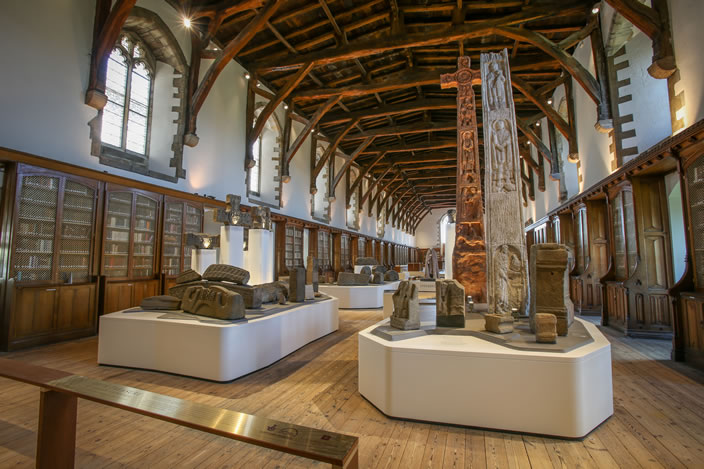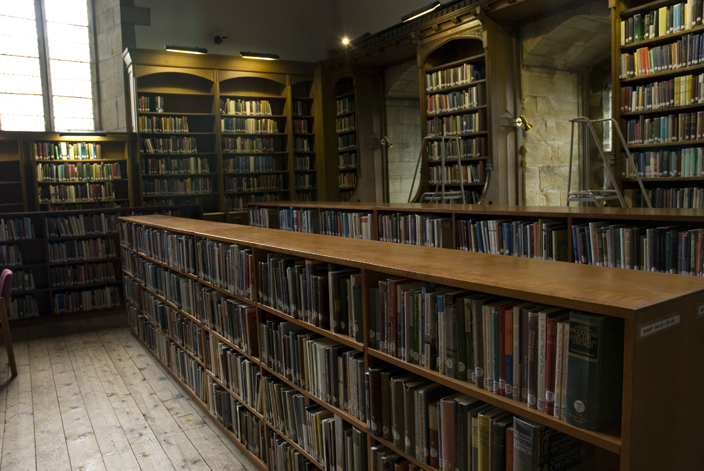Today the spectacular opening to Open Treasure, Durham Cathedral Museum, the monks’ dormitory (constructed between 1398 and 1404) was originally subdivided by wooden partitions to allow privacy. Each partition would have included a window, in front of which each monk would have had a desk for his books.
At each end of the dormitory were candles kept alight at night, and on the west side of the dormitory were the lavatories.
The sub-prior (the prior’s deputy, who was usually in charge of much of the day-to-day administration of a monastery) slept at the end of the dormitory closest to its entrance, presumably to monitor what was going on. Every night, he took attendance to make sure that all were present.
The most impressive architectural element of the dormitory is its massive beamed ceiling, constructed of oak.

View of the Monk's Dormitory - a space so large that, after the Dissolution of the Monasteries in the sixteenth century, it was subdivided to form several houses.
© Jeffrey Veitch
A Chequered History
The current Monks' Dormitory replaces an earlier one, originally located on the opposite (eastern) side of the cloister.
After the Dissolution of the Monasteries in the sixteenth century under Henry VIII, the disappearance of the monks that would have once lived here meant that the dormitory had no real function.
It was divided up into houses for the cathedral canons (members of the clergy who traditionally would live within a religious community, but did not take a vow of poverty and could therefore own land, unlike monks). These remained until 1849, at which the houses were demolished and the dormitory returned to a condition close to its original 14th century appearance, to be used as part of the Cathedral Library.
Current Use
Housed in the Monks’ Dormitory, the Cathedral Museum tells the remarkable history of Durham Cathedral and Christianity in North East England, beginning with the Cathedral’s magnificent collection of Roman, Anglo-Saxon and Viking stones. Visitors embark on a journey through time in the Monks’ Dormitory, following a physical timeline which charts the Cathedral’s development from the life of St Cuthbert to the present day. Interactive exhibits and activities for visitors of all ages create a truly immersive experience.
The Monks’ Dormitory has also retained its function as a reading room for the Cathedral Library. The library has an excellent collection, including many priceless manuscripts and early printed books. Much of its archive related to the Diocese of Durham (wills, probate records, etc.) is housed and administered by Durham University’s Palace Green Library and Archive, where it is used extensively by researchers.

Today, part of the Cathedral Library, the Dormitory houses a reading room, and open stack shelves, where the Cathedral's less valuable collections are kept.
© Jeffrey Veitch

